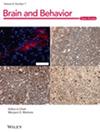The Effect of Combining Transcranial Direct Current Stimulation and Pain Neuroscience Education in Patients With Chronic Low Back Pain and High Pain Catastrophizing: An Exploratory Clinical, Cognitive, and fMRI Study
Abstract
Objectives:
Priming the neural circuitry likely targeted by pain neuroscience education (PNE) using transcranial direct current stimulation (tDCS) may enhance the efficacy of PNE. This exploratory study aimed to examine the effects of combining tDCS and PNE in those with chronic low back pain (CLBP).
Methods
Six participants experiencing CLBP completed the study. Assessments for pain catastrophizing, kinesiophobia, pressure pain thresholds (PPT), pain intensity, cognitive function, and resting state and task fMRI were collected before and after the combined tDCS and PNE intervention. Each participant received five 20-min sessions of 2.0 mA tDCS targeting the left dorsolateral prefrontal cortex (DLPFC), followed by a 20-min PNE session.
Results
The participants had a 58.9% reduction in pain catastrophizing, a 25.9% reduction in kinesiophobia, and an 18.8% improvement in cognitive function (i.e., reduced attentional interference). The MRI results indicated increased gray matter volume within the left DLPFC. Additionally, larger reductions in DLPFC activity at rest were associated with larger reductions in kinesiophobia. Increased modularity within networks responsible for cognitive control and executive functions was evident following the intervention.
Discussion
Our clinical and fMRI outcomes shed light on the clinical potential of combining tDCS and PNE, as well as the mechanisms substantiating their effects. We speculate that tDCS alters brain activity and structure, amplifies the effects of PNE, and promotes positive changes in the cognitive-evaluative and sensory-discriminative pain domains investigated. A randomized controlled trial is warranted to determine the effects of tDCS combined with PNE compared with tDCS or PNE alone.


 求助内容:
求助内容: 应助结果提醒方式:
应助结果提醒方式:


